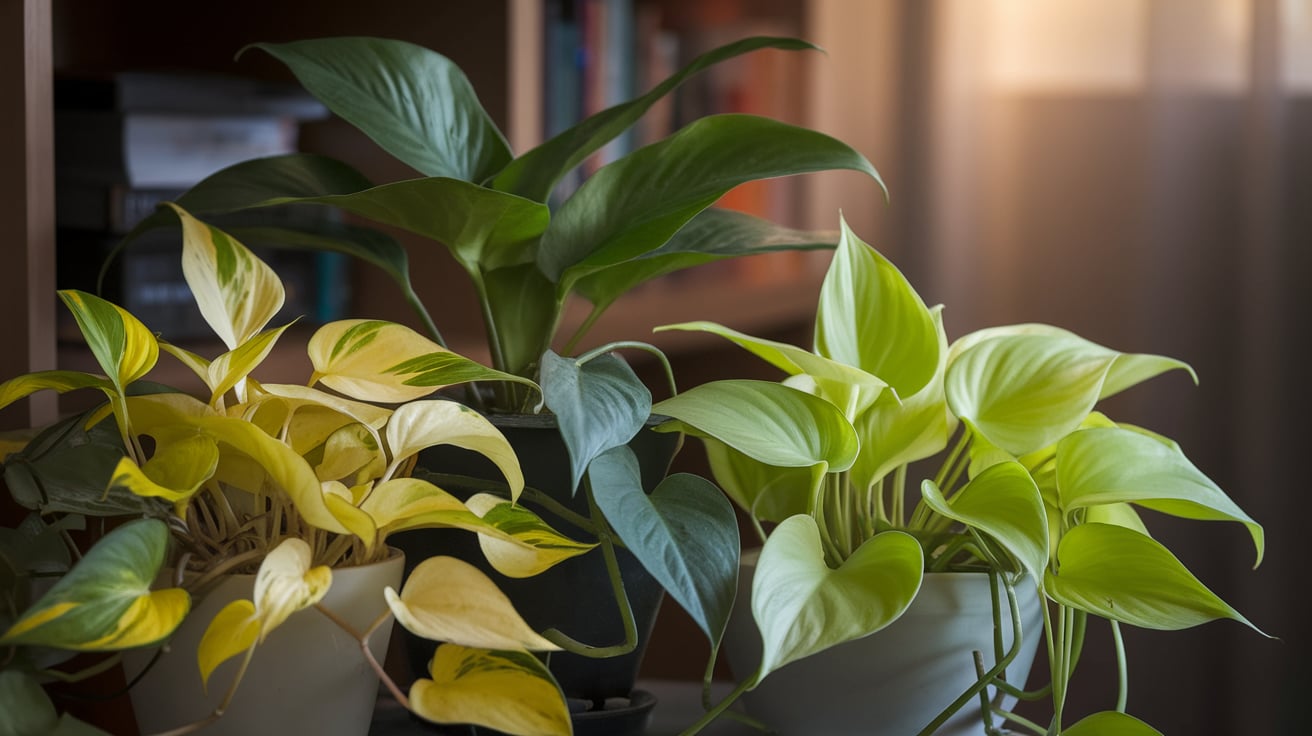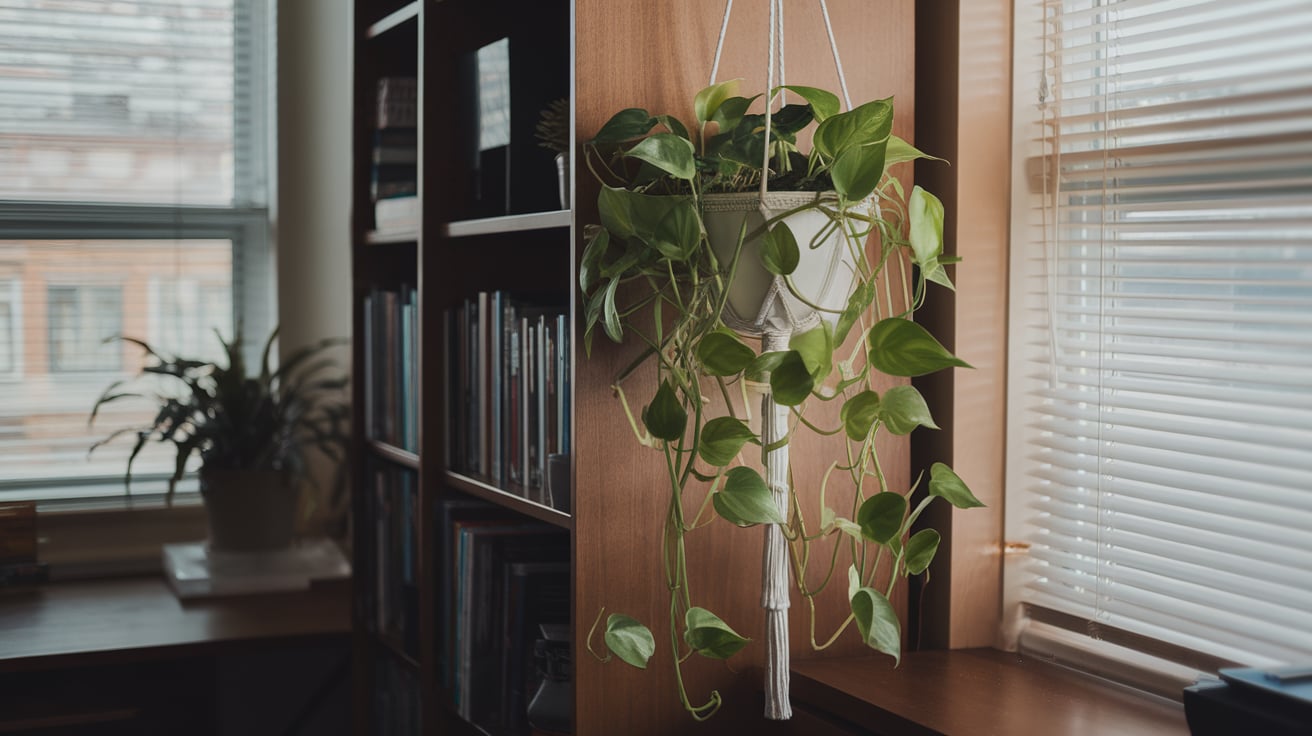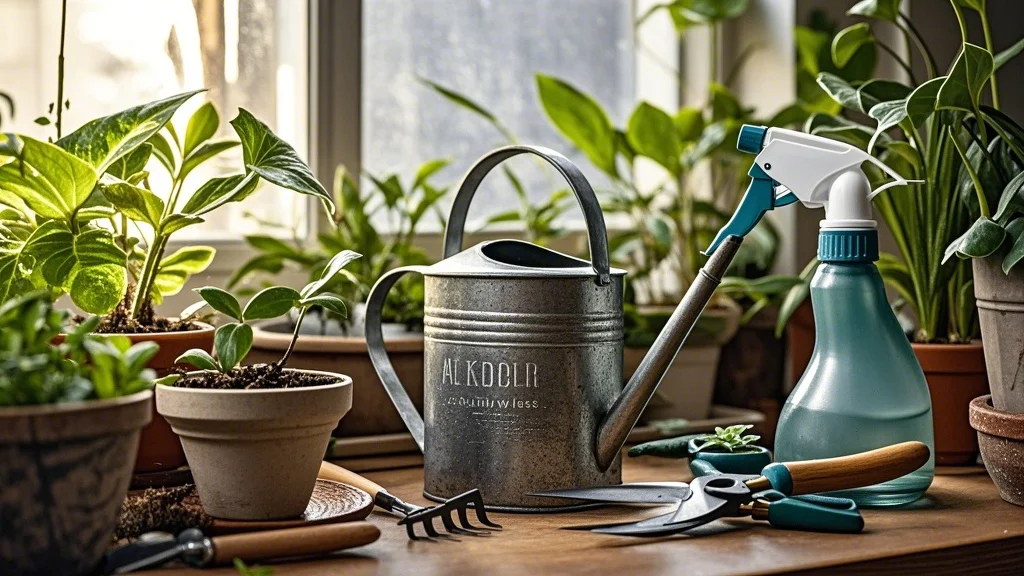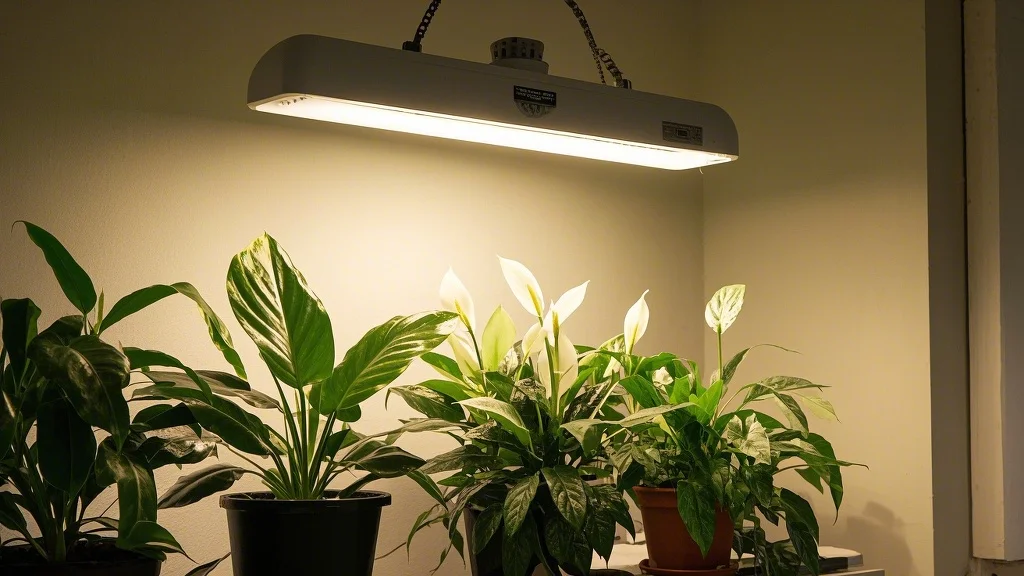Living in a dimly lit apartment or working in an office with minimal natural light doesn’t mean you have to give up on your dream of becoming a plant parent. Pothos plants (Epipremnum aureum) are renowned for their remarkable ability to thrive in less-than-ideal lighting conditions, making them perfect companions for urban dwellers with limited access to sunlight.
These trailing beauties not only adapt well to low light environments but also purify the air, require minimal maintenance, and add a touch of natural elegance to any space. However, not all pothos varieties perform equally in shadier spots. Some cultivars have evolved specific adaptations that allow them to photosynthesize efficiently even when light is scarce.
In this comprehensive guide, we’ll explore the most resilient pothos varieties for low light conditions, helping you select the perfect plant companions for your dimly lit spaces.
Contents
- 1 Understanding “Low Light” for Houseplants
- 2 Top Pothos Varieties for Low Light Conditions
- 3 How Light Levels Affect Pothos Growth and Appearance
- 4 Best Practices for Pothos in Low Light Environments
- 5 Creative Placement Ideas for Low Light Pothos
- 6 Troubleshooting Common Low Light Issues
- 7 Supplemental Lighting Options
- 8 Conclusion
Understanding “Low Light” for Houseplants
Before diving into specific varieties, let’s clarify what “low light” actually means in the context of indoor gardening:
- Low light: Areas that receive indirect, filtered light from north-facing windows or spots several feet away from east or west-facing windows. You can read in these areas without turning on additional lighting.
- Very low light: Spaces with minimal natural light, such as hallways, bathrooms without windows, or corners far from any light source.
It’s important to note that even the most shade-tolerant pothos varieties need some light to survive. No plant can thrive in complete darkness, as light is essential for photosynthesis. However, pothos plants are remarkably adaptable and can survive with much less light than most houseplants.
Top Pothos Varieties for Low Light Conditions

1. Golden Pothos (Epipremnum aureum)
The classic Golden Pothos is the standard bearer for low light tolerance. This variety features heart-shaped leaves with splashes of yellow variegation against a green background.
Why it thrives in low light:
- Highly adaptable photosynthetic efficiency
- Maintains growth even in dim conditions
- The variegation becomes less pronounced in lower light, allowing more green surface area for light absorption
Care tips for low light settings:
- Water when the top 1-2 inches of soil feels dry
- Can tolerate occasional neglect
- Growth will be slower than in brighter conditions, requiring less frequent fertilization
2. Jade Pothos (Epipremnum aureum ‘Jade’)
Jade Pothos features solid green leaves without variegation, making it exceptionally well-suited for low light environments.
Why it thrives in low light:
- The solid green leaves maximize chlorophyll content
- More efficient photosynthesis in limited light conditions
- Maintains vibrant color even in shadier spots
Care tips for low light settings:
- Allow soil to dry slightly between waterings
- Can handle deeper shade than variegated varieties
- Maintains more robust growth in low light compared to variegated types
3. Neon Pothos (Epipremnum aureum ‘Neon’)
With its bright, lime-green foliage, Neon Pothos brings a pop of color to dim corners while still performing admirably in low light.
Why it thrives in low light:
- Despite its bright coloration, contains sufficient chlorophyll for low light conditions
- The lighter color actually helps maximize light absorption
- Maintains its distinctive chartreuse color even in lower light
Care tips for low light settings:
- May need slightly more light than Jade or Golden varieties to maintain its vibrant color
- Allow soil to dry out between waterings
- Colors may deepen slightly in lower light conditions
4. Marble Queen Pothos (Epipremnum aureum ‘Marble Queen’)
Marble Queen features heavily variegated leaves with creamy white and green patterns. While it can survive in low light, it’s worth noting that:
Why it adapts to low light:
- Will survive in low light conditions but grows more slowly
- Variegation may become less pronounced over time
- New growth may emerge with more green to compensate for reduced light
Care tips for low light settings:
- Water less frequently than in brighter conditions
- May benefit from occasional rotation to a brighter spot
- Growth will be significantly slower than solid green varieties
5. Pearls and Jade Pothos (Epipremnum aureum ‘Pearls and Jade’)
This compact variety features smaller leaves with green, white, and gray-silver variegation.
Why it adapts to low light:
- More compact growth habit works well in low light
- Can maintain some variegation even in dimmer conditions
- Slower growth rate naturally suits low light environments
Care tips for low light settings:
- Water when the top inch of soil is dry
- Variegation may reduce in very low light
- Benefits from occasional cleaning to maximize light absorption
6. Silver Pothos (Scindapsus pictus)
While technically not a true pothos (it’s in the Scindapsus genus), Silver Pothos or Satin Pothos is often grouped with pothos plants and performs surprisingly well in low light.
Why it thrives in low light:
- Silvery markings help reflect and maximize available light
- Naturally adapted to growing under forest canopies in the wild
- Maintains its distinctive markings even in lower light
Care tips for low light settings:
- Prefers to dry out more between waterings than true pothos
- Growth will be slower but steady
- Leaves may become smaller in very low light conditions
How Light Levels Affect Pothos Growth and Appearance
Understanding how different light conditions impact your pothos can help you set realistic expectations and provide optimal care:
Changes in Low Light Conditions
- Growth rate: All pothos varieties grow more slowly in low light. This isn’t necessarily bad—it means less frequent pruning and repotting.
- Leaf size: Leaves typically become smaller in low light conditions as the plant conserves energy.
- Variegation: Highly variegated varieties may produce more green and less white/cream coloration in new growth, as the plant attempts to increase photosynthesis.
- Vine length: Vines may become more leggy with greater distance between leaves as the plant stretches toward light sources.
- Water needs: Plants in low light require less frequent watering as their metabolism slows and they use water more slowly.
Best Practices for Pothos in Low Light Environments
To help your pothos not just survive but thrive in low light conditions, follow these specialized care tips:
Watering Adjustments
In low light, pothos plants use water more slowly and are prone to overwatering issues:
- Allow the top 2 inches of soil to dry completely before watering
- Reduce watering frequency by 30-50% compared to brighter locations
- Always check soil moisture with your finger before watering
- Use pots with drainage holes to prevent root rot
Optimal Soil Mix
The right soil can make a significant difference for pothos in low light:
- Use a well-draining potting mix with added perlite or pumice
- Consider adding a small amount of activated charcoal to prevent soil sogginess
- Avoid moisture-retaining additives like coconut coir in very low light spots
Fertilization Strategy
Plants in low light have reduced nutritional needs:
- Fertilize at half the recommended strength
- Apply fertilizer only during the growing season (spring and summer)
- Limit to once every 2-3 months rather than monthly
- Use a balanced houseplant fertilizer (NPK 10-10-10 or similar)
Cleaning Routine
Dust accumulation can further reduce the light reaching your plant’s leaves:
- Wipe leaves gently with a damp cloth monthly
- For larger collections, consider a shower rinse every few months
- Pay special attention to the upper surface where dust collects most
Rotation Schedule
Help your pothos receive even light exposure:
- Rotate the plant a quarter turn weekly
- If possible, move to a brighter location for a “light bath” once a month
- Watch for the plant leaning toward light sources and adjust positioning
Creative Placement Ideas for Low Light Pothos
Make the most of your low light tolerant pothos with these placement suggestions:
- Bathroom Trailing Beauty: Jade or Golden Pothos thrive in humid bathroom environments, even with minimal natural light.
- Office Desk Companion: Neon Pothos adds a pop of color to workspaces with fluorescent lighting.
- Bedroom Air Purifier: Place a pothos on a dresser away from windows for better air quality without disturbing sleep with too much brightness.
- Hallway Highlighter: Use Silver Pothos to brighten dark hallways—its reflective leaves catch and amplify limited light.
- Bookshelf Cascader: Arrange a pothos to trail down bookshelves, creating a living accent in reading nooks.
Troubleshooting Common Low Light Issues
Even the most shade-tolerant pothos can develop problems in suboptimal lighting. Here’s how to address common issues:
Yellowing Leaves
- Cause: Usually overwatering, more common in low light due to slower water usage
- Solution: Reduce watering frequency and ensure proper drainage
Leggy Growth
- Cause: Plant stretching toward limited light sources
- Solution: Prune occasionally to encourage bushier growth and rotate regularly
Loss of Variegation
- Cause: Plant adapting to maximize photosynthesis in low light
- Solution: Accept the adaptation or move to slightly brighter location if variegation is desired
Stunted Growth
- Cause: Insufficient light for normal development
- Solution: Supplement with grow lights or accept slower growth as normal for conditions
Supplemental Lighting Options
If your space is extremely dark but you’re set on growing pothos with beautiful variegation, consider these supplemental lighting options:
- LED Grow Lights: Energy-efficient and can be placed close to plants without heat damage
- Full-Spectrum Bulbs: Can be used in regular lamps positioned near plants
- Light Strips: Flexible LED strips can be mounted under shelves or cabinets
- Smart Grow Lights: Programmable options that automatically provide optimal light cycles
Conclusion
Pothos plants are truly the champions of low light tolerance in the houseplant world. While all varieties can survive in dimmer conditions, the clear winners for thriving in low light are the Jade Pothos, Golden Pothos, and Neon Pothos. These varieties maintain healthier growth rates and more attractive foliage with minimal light.
Remember that even these shade-tolerant varieties perform best with some indirect light. Position them where they’ll receive at least some ambient light, and they’ll reward you with their lush, trailing vines and air-purifying benefits.
For urban dwellers in apartments with limited natural light or office workers under fluorescent lighting, pothos plants offer an accessible way to bring nature indoors. Their forgiving nature and adaptability make them perfect companions for both novice and experienced plant parents navigating the challenges of indoor gardening in less-than-ideal lighting conditions.
Whether you choose the classic Golden Pothos or opt for the bright Neon variety, these resilient plants prove that you don’t need a sun-drenched space to enjoy the benefits of living with houseplants.
Looking for more indoor gardening advice for challenging conditions? Visit OwnGardens.com for expert guides on growing thriving houseplants in urban environments.










